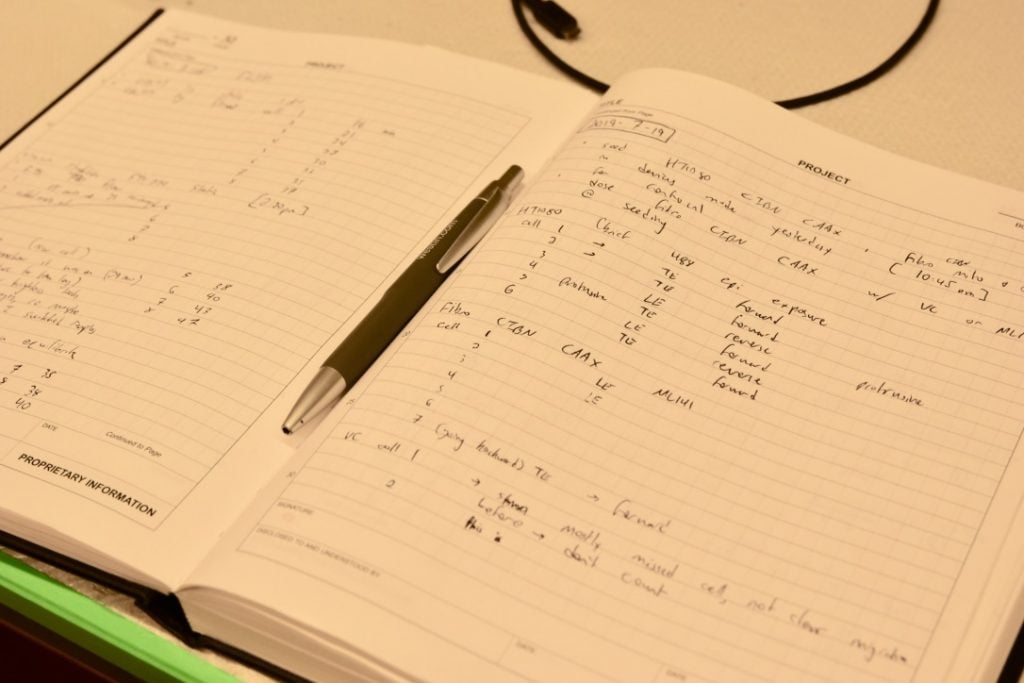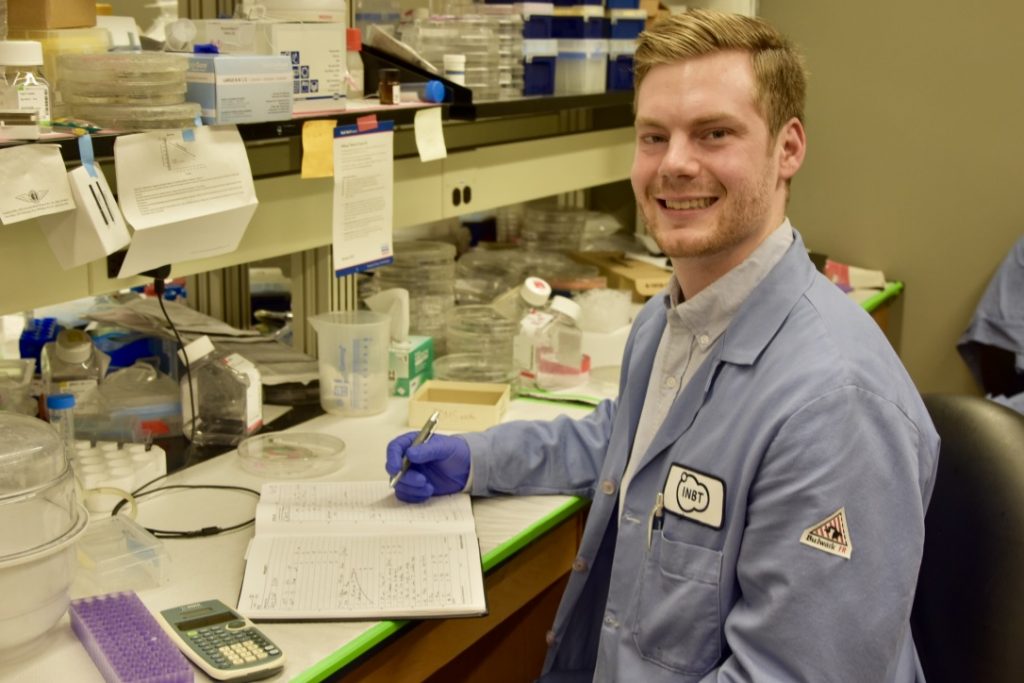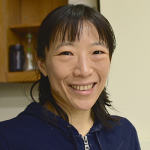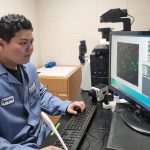Collaboration is Key to Achieving Translational Goals

This story is also available in the 2019 Nano-Bio Report.
By Luke Thorstenson
The translation of research from discovery to invention and eventually to the market has always been a major focus for the Institute for NanoBioTechnology (INBT). Because INBT has a diverse range of research topics, we continue to expand our translational programming and support to meet the needs of our faculty, fellows, and students. The three main translational goals for our Corporate Partnership Office are to identify potential industry partners to fund and/or collaborate on sponsored research opportunities for our faculty (or license existing patents), provide education and training for the commercialization of discoveries and/or inventions, and secure funding to create new companies.
To accomplish these goals, we work closely with Johns Hopkins Technology Ventures (JHTV). JHTV was launched in 2014 to support the translation of Johns Hopkins University’s (JHU) academic excellence into commercial applications. It was because of this close working relationship that we brought JHTV’s senior leadership, Christy Wyskiel and Brian Stansky, to INBT in November to participate in the first INBT Translational Research Seminar. Wyskiel serves as Senior Advisor to the President for Innovation and Entrepreneurship, and Stansky is Senior Director of FastForward, a coordinated suite of resources designed to efficiently move technologies from startup to marketplace. During the seminar Wyskiel and Stansky detailed how JHTV provides funding, space, and resources to maximize the impact of JHU research through commercialization and entrepreneurship.
INBT’s Corporate Partnership Office works closely with any faculty interested in starting their own company through a new structure that breaks the JHU/JHTV programs down into three distinct phases — enrichment, improvement, and scale. Our talented staff and advisory board members provide one-on-one support to help our faculty create a plan and use resources available to them as Johns Hopkins investigators. Through our support, and close coordination with the great staff at JHTV, we hope to de-mystify the process and give our faculty’s technology the best chance to succeed and make a real impact for the world. The full translational program is being finalized and we plan to release it in summer 2020.

Luke Thorstenson
One often overlooked aspect of translational research is the customer discovery process. Years ago, the National Science Foundation (NSF) hired a well-known Silicon Valley entrepreneur to help determine why many of the projects they funded never made it to the market. The short answer was that products and services were being created that the market did not value. The NSF grantees were developing products, tools, and/or solutions without learning who their potential customers might be, or how they might best be adopted in the real world by users. To address this issue, the NSF created the Innovation-Corps (I-Corps) program to get researchers out of their labs to discover more about potential customers and potential uses for their technology.
JHU fully embraced the I-Corps program and now serves as a regional hub for the national program. The regional program is based on the same principals as the national program, but it is shorter in length. The goal of this shorter course is to validate a specific problem or need and to determine what products or services could address this need, while the longer courses include further steps to develop a business model around solving that specific problem. The regional I-Corps program is one of the first programs we encourage our students and faculty to participate in once they start thinking about commercializing their research.
Does My Invention Solve Real World Problems?
by Chris Yankaskas
After publishing a paper on the development of a microfluidic assay to predict breast cancer patients’ risk of developing metastasis and to identify effective therapeutics, I asked, “what next?” (Go to page 10 to learn more about this research.) Having spent years working on a translational project, I was excited by what had been achieved and daunted by the path ahead towards clinical development and implementation, which is why I enrolled in the JHTV I-Corps course.
The course’s main goal is to ensure that the problem of interest is real and solvable. Elizabeth Good Mazhari was my instructor and has a long resume of working with and for tech startup companies and ventures, and is a National Faculty I-Corps Instructor for NSF and NIH. To obtain wide and objective views my problem of interest, she covered how to conduct interviews to test hypotheses about market problems and conditions with the people I think are experiencing the problem – in my case, chiefly oncologists.
I admittedly have not spent a lot of time talking to clinicians who experience the problem that my research works to solve, and did not have a list of oncologists I could interview. Fortunately, being an INBT researcher gave me a head start. My first few interviews were physician-scientists I had worked with in the past, and through introductions made by Luke Thorstenson, the INBT Director of Corporate Partnerships. From there I gained momentum. In each interview I asked for names of people in the field who might be useful to contact, and using referrals by the people I had spoken to in order to get in touch.

Chris Yankaskas
After 4-weeks, I had a better understanding of how clinicians diagnose cancer, how the oncology, pathology, and surgical teams involved in the problem I was addressing work together, and what factors make a physician willing to order a diagnostic test. I also realized that there was a lot more to learn. I was working on a very valid and real problem, but one that was very complex. I was able to refine my research and development steps to fill in the knowledge gaps.
It was helpful to learn how an engineering research project transfers into a business model. Talking directly to potential end-users for a product I was developing gave helpful guidance and future milestones to achieve. In addition to project planning, the program had many ancillary benefits. The 20 to 30-minute conversations I had with clinicians were invaluable compared to reading on my own to advance my understanding of the clinical environment and decision making. I made connections with practitioners who I can contact in the future with questions, and identified some potential research collaborations.





